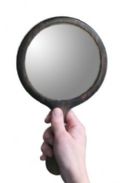|
While you won’t see it on any magazine covers and it’s a difficult concept to understand—especially for those of us whose lives revolve around food—there are many people who struggle to ingest enough calories throughout the day. Whether they fail to meet the minimum recommended daily calories or they’re trying to build muscle, it’s an issue that doesn’t get much attention in our weight-loss-obsessed world. The deficit can occur for a number of reasons. Whatever those reasons might be, eating within your calorie range is important for your body to properly function, especially when fitness is part of the equation. It is very difficult to meet nutritional needs on a diet that is less than 1,200 calories, and long-term usage of a very low-calorie diet could result in protein and fat deficiencies as well as various vitamin and mineral deficiencies. Other complications include muscle wasting, constipation, weakness, fatigue, dizziness, irregular menstrual periods, swelling in hands and feet, gall bladder issues, gout and electrolyte imbalances. In addition, you need to eat enough calories to maintain a healthy metabolism and to stay energized. Do not attempt a very low-calorie diet without the guidance of a medically managed weight-loss program. While you might think that eating less is the golden ticket, eating too little may actually hurt your weight-loss efforts. Don’t make the mistake of believing that "the less I eat, the more I’ll lose." As with everything in life, proper calorie intake is all about balance. With this guide to boosting your calories with smart snack and meal choices, you'll have the nutrients and energy you need to finally hit those weight goals. Identifying the Problem
To begin the process of adding calories to your healthy eating plan, it's important that you first identify the problem area. For one to two weeks, accurately record every meal and snack time, carefully measuring the portion size of all foods and beverages consumed and tracking your complete intake. Then, add the nutrients calcium, fiber, iron, vitamin A, vitamin C and zinc. | |||||||||||||||||||||||||||||||||||||||||||||||||||||||||||||||||||||||||||||||||||||||||||||||||||||||||||||||||||||||||||||||||||||||||||||||||||||||||||||||||||||||||
| If you are low in: | Use chart: |
| Protein | Meat & Protein; Dairy & Non-Dairy Milk Alternatives |
| Fat | Fats & Sweeteners |
| Carbohydrates | Fruits & Vegetables; Grains (using whole-grain choices) |
| Calcium | Dairy & Non-Dairy Milk Alternatives |
| Fiber | Fruits & Vegetables; Grains (using whole-grain choices) |
| Vitamin A, Vitamin C | Fruits & Vegetables |
| Iron, Zinc | Meat & Protein |
Specific Foods and How to Use Them:
| Fruits & Vegetables | ||
| Food | Calories | How to Use |
| Avocado 1/2 medium |
160 | Slice for a sandwich or salad. Mash as a dip for vegetables or chips. |
| Banana 1 medium |
105 | Eat alone as a snack. Mash to put in baked goods. Blend into a smoothie or milkshake. Use as topping for cereal or pudding. |
| Dried Fruit (raisins, cranberries, cherries, blueberries, apricots, pineapple, peaches, prunes) 1 ounce |
60-100 | Use in trail mix. Stir into yogurt. Add to cereal. Top a salad. Have as a snack. |
| Sweet Potato 1 medium, with skin |
105 | Use in soups, casseroles or baked goods. Make homemade sweet potato fries. Top with cinnamon and brown sugar. |
| Peas, Corn, Beans (black, kidney, pinto, navy, garbanzo) ½ cup |
60-300 | Mix with rice, pasta, soups or casseroles. Top a salad. Make into a dip. |
| Fruit (fresh, frozen, canned) ½ cup |
60 | Eat alone as a snack. Spread with peanut, nut or seed butter. Mix with a cereal, pudding or smoothie. |
| Ripe, Black Olives ½ ounce |
35 | Add to a salad, pizza or pasta. |
| Meat & Protein | ||
| Food | Calories | How to Use |
| Egg 1 large |
80 | Use as a breakfast food. Add to baked goods, casseroles, French toast, pancakes, waffles or ground meat before cooking. Hard-boil and top a salad, eat as a snack or make into egg salad. |
| Peanut Butter, Nut and Seed Butters (peanut, soy, almond, sunflower, cashew, sesame, pecan) 1 tablespoon |
90-100 | Use as a dip for fruit or vegetables. Spread on crackers or toast. Stir into hot cereals. Mix into smoothies or protein shakes. |
| Nuts, Seeds, Peanuts (almonds, peanuts, cashews, pistachios, walnuts, macadamia, pecans, sunflower) 1 ounce |
155-200 | Use in baked goods. Sprinkle on yogurt, ice cream, cereal, salads, vegetables or stir-fry. Use in trail mix. Enjoy as a snack. |
| Hummus 1 tablespoon |
25 | Use as a dip for vegetables, crackers or pita chips. Spread on a sandwich. |
| Lean Cuts of Meat, Poultry or Fish 4 ounces, cooked |
100-250 | Bake and have with a meal. Make a sandwich. Top a salad or pasta. Add to a casserole. |
| Dairy & Non-Dairy Milk Alternatives (Calcium and Vitamin D Fortified) | ||
| Food | Calories | How to Use |
| Full-Fat Dairy or Soy Cheese (cheddar, Swiss, provolone, muenster, Colby, mozzarella, Feta, Parmesan) 1 ounce |
75-125 | Top cooked vegetables, potatoes, pasta, casseroles, soups, pizza, popcorn, sandwiches, crackers or salads. Have as a snack, served with whole-wheat crackers or vegetables. |
| Whole Milk or Soy Milk 1 cup |
150 | Drink. Use in place of water in soups, hot cereals, smoothies or other recipes. |
| Pudding or Custard ½ cup |
110-200 | Make with whole milk and eggs. Mix in fruit. Have as a dessert or snack. |
| 4% Cottage Cheese ½ cup |
120 | Serve with fruit or vegetables. Have as a snack. Serve as a side dish with a meal. |
| Full-Fat Yogurt (dairy or soy) 1 cup |
140 | Enjoy as a snack. Use as a dip with fruit. Mix into a smoothie or smoothie bowl. |
| Whole Chocolate Milk, Hot Chocolate, Commercial Eggnog, Yogurt Smoothie (dairy or soy) 1 cup |
180-210 340 115-140 |
Have as a beverage. |
| Grains | ||
| Food | Calories | How to Use |
| Granola Bars and Energy Bars | 120-270 | Eat as a portable, nonperishable quick snack. |
| Trail Mix 1.25 ounces |
180 | Eat as a portable, nonperishable quick snack. |
| Oatmeal 1 cup, cooked |
160 | Use as a breakfast item. Mix into cookies, muffins or breads. |
| Quinoa ½ cup, cooked |
110 | Use as a side dish for meals. Add to soups. |
| Brown Rice ½ cup, cooked |
110 | Use as a side dish for meals. Add to soups and casseroles. |
| Whole-Wheat Bread, 2 slices Bagel, 3 ounces English Muffin, 2 ounces Croissant, 2 ounces Tortilla, 8-inch |
140-150 220 135 230 130 |
Make a sandwich using deli meat, cheese, egg, egg salad, nut or seed butter. Use in egg strata or bread pudding. |
| Pancake, 4-inch Waffle 1, 4-inch 1, 7-inch |
85 100 230 |
Top with maple syrup, fruit, whole milk yogurt, nuts, peanut butter and/or butter for breakfast. |
| Buttered Popcorn 3 cups |
130 | Sprinkle with parmesan cheese or eat plain as a snack. |
| Fats & Sweeteners | ||
| Food | Calories | How to Use |
| Oils (canola, olive, sunflower, vegetable, soybean, corn) 1 teaspoon |
40 | Use in homemade salad dressing for salads, sautéed vegetables or pasta. Toss with pasta, noodles or cooked vegetables. Add to homemade soup or stir-fry. Use in baked goods. Dip bread in olive oil and flavored vinegar. |
| Butter (dairy, soy, coconut-based) 1 teaspoon |
35 | Spread on toast, bread, bagel or English muffin. Melt over vegetables or pasta. Use in baking. |
| Heavy Whipping Cream Coconut Cream Half and Half 1 tablespoon |
50 50 20 |
Use as some of the liquid in hot cereal. Add to a smoothie or milkshake. Use in a creamed soup or creamy sauces. |
| Full-Fat Ice cream Frozen Yogurt ½ cup |
150-300 150 |
Serve with fruit and/or nuts. |
| Full-Fat Sour Cream 1 tablespoon |
30 | Use as a topping on potatoes. Use in dips. Mix into a casserole or soup. |
| Honey, Pure Maple Syrup, Jam, Jelly 1 tablespoon |
55-65 | Use to top pancakes, waffles, French toast, toast or bagels. Use to flavor hot cereal, yogurt, tea or smoothies. |
| Full-Fat Salad Dressing and Mayonnaise 2 tablespoons |
90-190 | Add to sandwiches, egg salad, potato salad, pasta salad, coleslaw, leafy green salads or vegetables. |
| Gravy 2 tablespoons |
30-50 | Top meat, potatoes, pasta, rice or vegetables. |
| Meal Replacements & Supplements | ||
| Food | Calories | How to Use |
| Frozen or Shelf-Stable Meal Replacement | 300-400 | Have alone as a main dish or add a side salad, raw or cooked vegetables, and/or piece of fruit to round out the meal. |
| Meal Replacement Shake (Boost, Ensure, Carnation Instant Breakfast or similar store brand) |
130-350 | Have alone as a snack. Use as a meal and add a side salad, raw or cooked vegetables, and/or piece of fruit to round out the meal. |
| Protein Powder, 1 ounce | 100-130 | Add to smoothies, pudding, cottage cheese or water. |
| Dry Powdered Milk 2 tablespoons |
30 | Add to mashed potatoes, macaroni and cheese, ground meats, cream soups, pudding, casseroles, hot cereals or milk. |
| Benecalorie 1.5 ounce |
330 | Add to smoothies, milkshakes, yogurt, hot cereal, or mashed potatoes. |
Remember to monitor your calorie intake for all nutrients as you work to boost your calorie intake. If you find that you are still struggling with calorie intake even after implementing some of the tips above, please contact your primary care provider, registered dietitian nutritionist or a behavioral health therapist who specializes in eating issues for additional advice.




.png)



